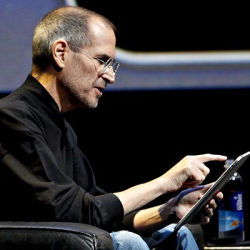
One of the worst-kept secrets in the business world is Apple’s obsessive quest for secrecy. Founder and former CEO Steve Jobs was notorious for withholding details about the company’s plans. Instead, he pointed the press and public toward Apple’s existing products and stores. And the situation hasn’t changed in any noticeable way since Tim Cook took the reins of Apple and emerged as CEO in January 2011.
"The company’s secretive culture is deeply rooted," notes NPD Group tech analyst Stephen Baker. "The ability of Apple to get great products to market is part of its uniqueness . . . and its mystique." Of course, the recent Apple-Samsung trial — which landed Apple a $1.05 billion verdict — came at some cost to Cupertino. A number of insights into Apple and its business model were revealed during the course of the trial.
Most of this information revolves around how Apple design teams work and interact — particularly in regard to building the iPhone and iPad. Apple senior vice president Scott Forstall testified that the firm considered adding a 7-inch iPad to its lineup as early as January 2011 — a form factor that Steve Jobs publicly rejected. Rumors are currently swirling that a smaller iPad will hit the market in October and complement the current 9.7-inch model.
Apple had also adopted a strict protocol for who could work on the original iPhone in 2004. The so-called "Project Purple" included rules that limited the designers and engineers to "superstars" already working at Apple. Forstall noted that Jobs wouldn’t allow anyone outside the company to participate in the project. In addition, Apple locked down an entire floor of its Cupertino headquarters with video cameras and keycards to ensure airtight security.
The trial also yielded insights into the evolution of various products, including prototypes that took on different shapes and sizes. For example, Apple had considered adding a "kickstand" to the iPad at one point. In addition, marketing insights emerged. For instance, Apple spent $97.5 million on iPhone advertising during 2007, the first year it was released, versus $149.5 million on iPad advertising during 2010, its first year.
But perhaps the biggest nugget that emerged from the court case was that Apple had used market research to help shape the development of some of its products, including the iPhone. Over the years, Jobs had publicly and steadfastly maintained the firm did not use market research or focus groups to shape its design and development efforts.
Baker dismisses the notion that news emanating from the trial provided any great insights. "There wasn’t anything incredibly eye opening," he states. "It was mostly normal corporate endeavors that occur when you are developing new products." Forrester analyst Charles Golvin agrees that there weren’t any "epiphanies." "We already know that Apple’s design and engineering process is rich, iterative, and disruptive," he says.
Perhaps the biggest takeaway from the court case, Golvin says, is that Apple’s secretive nature combined with a sense of awe about its products translates into any Apple news being scrutinized and any information about the firm being thoroughly dissected by the press, analysts, and the public. At this point, he concludes, "Apple recognizes that its secretiveness pays dividends and it uses this to its advantage."
Samuel Greengard is an author and journalist based in West Linn, OR.



Join the Discussion (0)
Become a Member or Sign In to Post a Comment